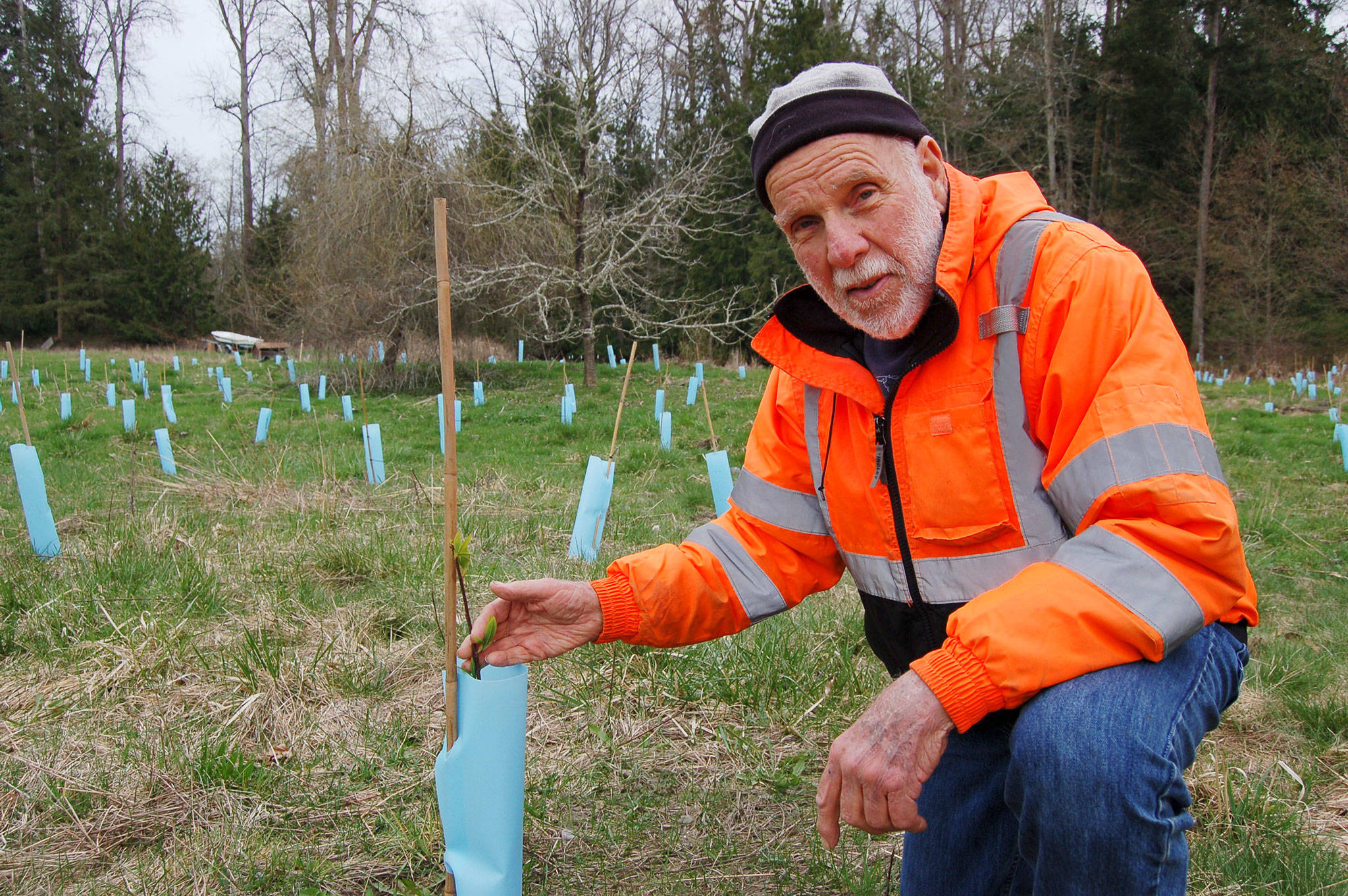Landowners living along the Dungeness River are working with restoration crews to improve the health of the river and its inhabiting species.
Jack Janis is one of 60 residents with property on the river that has allowed a team involved in a Dungeness Repair and Recovery Project to take out invasive species of shrubs or trees and replace them with native plants.
“It’s beautiful, this is what Sequim was 150 years ago,” Janis said of the restoration work the crew did on his property.
“I could not believe the effort that went into this thing.”
The project started in 2013 with funding from the Salmon Recovery Funding Board and the U.S. Fish and Wildlife Service to work with property owners along the Dungeness River to help restore the floodplains by creating a diverse forest.
Sara Doyle, stewardship coordinator for the North Olympic Salmon Coalition (NOSC) and District 1 representative for the Jefferson County Noxious Weed Control Board (NWCB) of Directors, said the river has changed a lot over the years.
NOSC is working with the Jamestown S’Klallam Tribe and the Clallam County NWCB to remove invasive plants such as butterfly bush from the river’s floodplains and restore it with native plants such as western red cedar and western hemlock.
According to Doyle, these native plants help restore salmon habitat and create pollinator areas for birds, bees and butterflies.
“Overall, our goal is to have a diverse forest — any planting we do has shrubs and trees,” Doyle explained.
So far, the team has removed an estimated 70 acres of butterfly bush and completed 70 acres of planting and seeding.
Doyle said butterfly bush is becoming a species of concern and the Dungeness has one of the worst infestations in Washington.
NOSC contracts a Washington Conservation Corps (WCC) crew of six individuals to take out invasive plants, seed and plant new native plants to residential and public property.
“They do everything,” Janis said. “They came out and wrapped all these trees and shrubs,” he added, explaining the wrapping acts as a small greenhouse to help the plants grow and protects the plants as the crew works.
The crew planted an estimated 400 trees and shrubs on Janis’ property and the service was provided free of charge.
They took out Janis’ blackberry bushes and English ivy plants and replaced them with paper birch trees, mock orange, western hemlock, vine maple, Indian plum, ninebark, red osier dogwood, red alder and red western cedar.
“It’s really been wonderful engaging landowners in the river,” Doyle said. “It’s been wonderful to hear their stories and connect them with the restoration work helping them feel like they can make a difference.”
The crew will continuously work with the landowners over time to help them maintain their property. It will continue to visit the site to check on the plants and replace any dead ones with new ones and help with site maintenance.
“The attitude of these people, they want to do well,” Janis said of the crew’s efforts.
“There’s a future for America when I sees jobs like this.”



